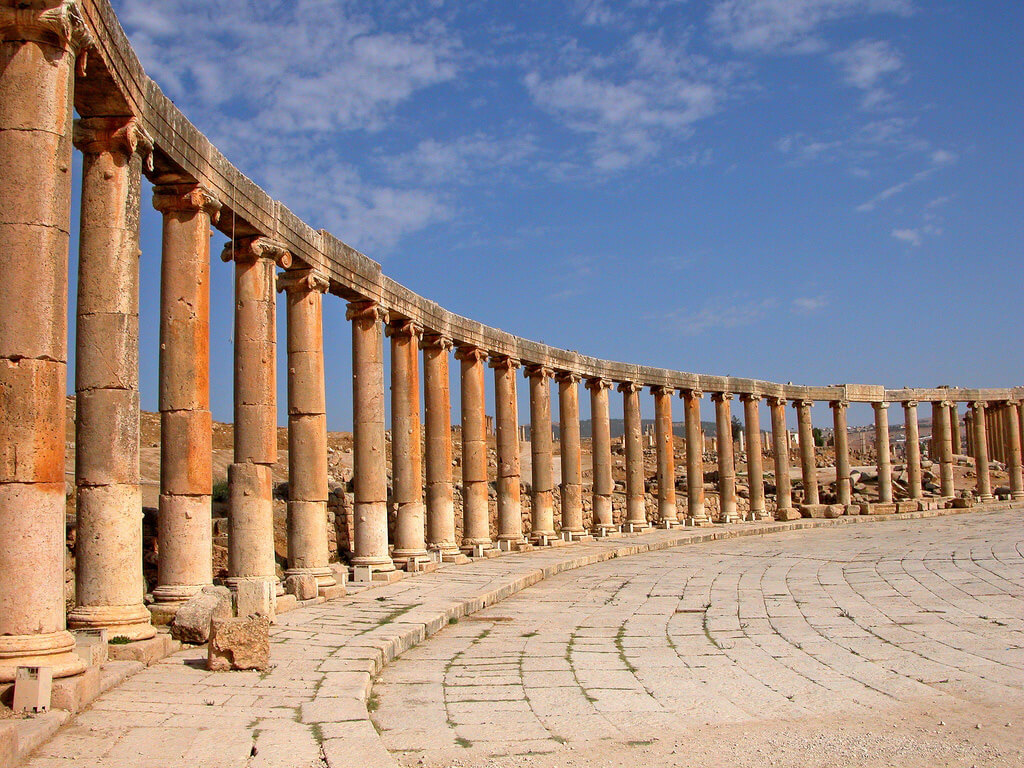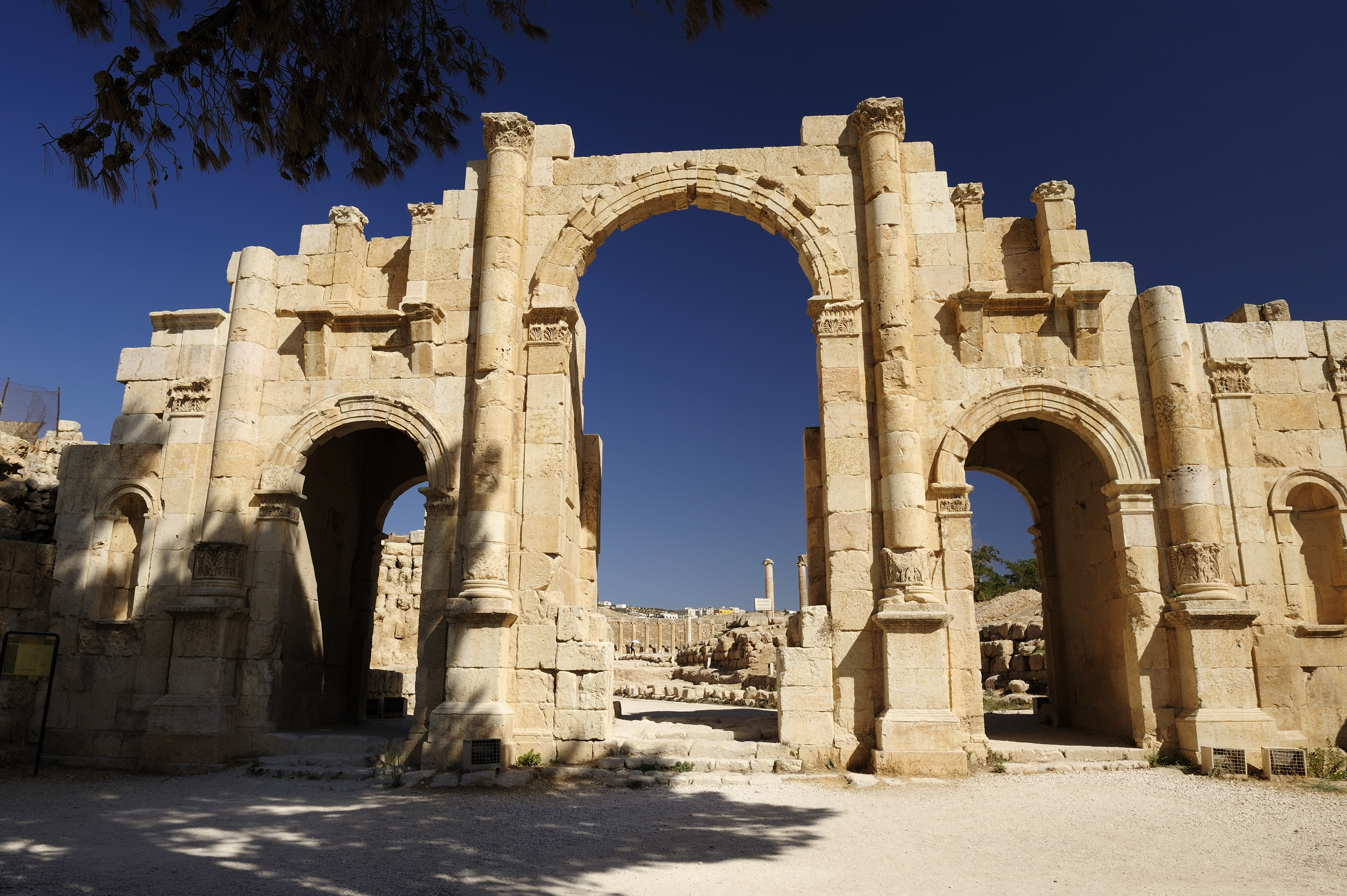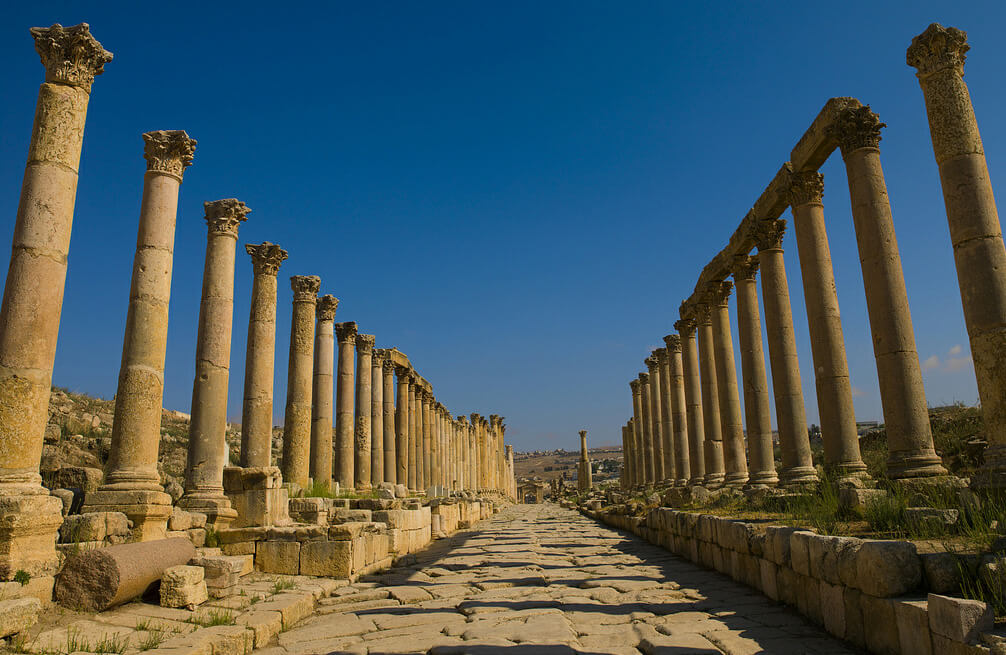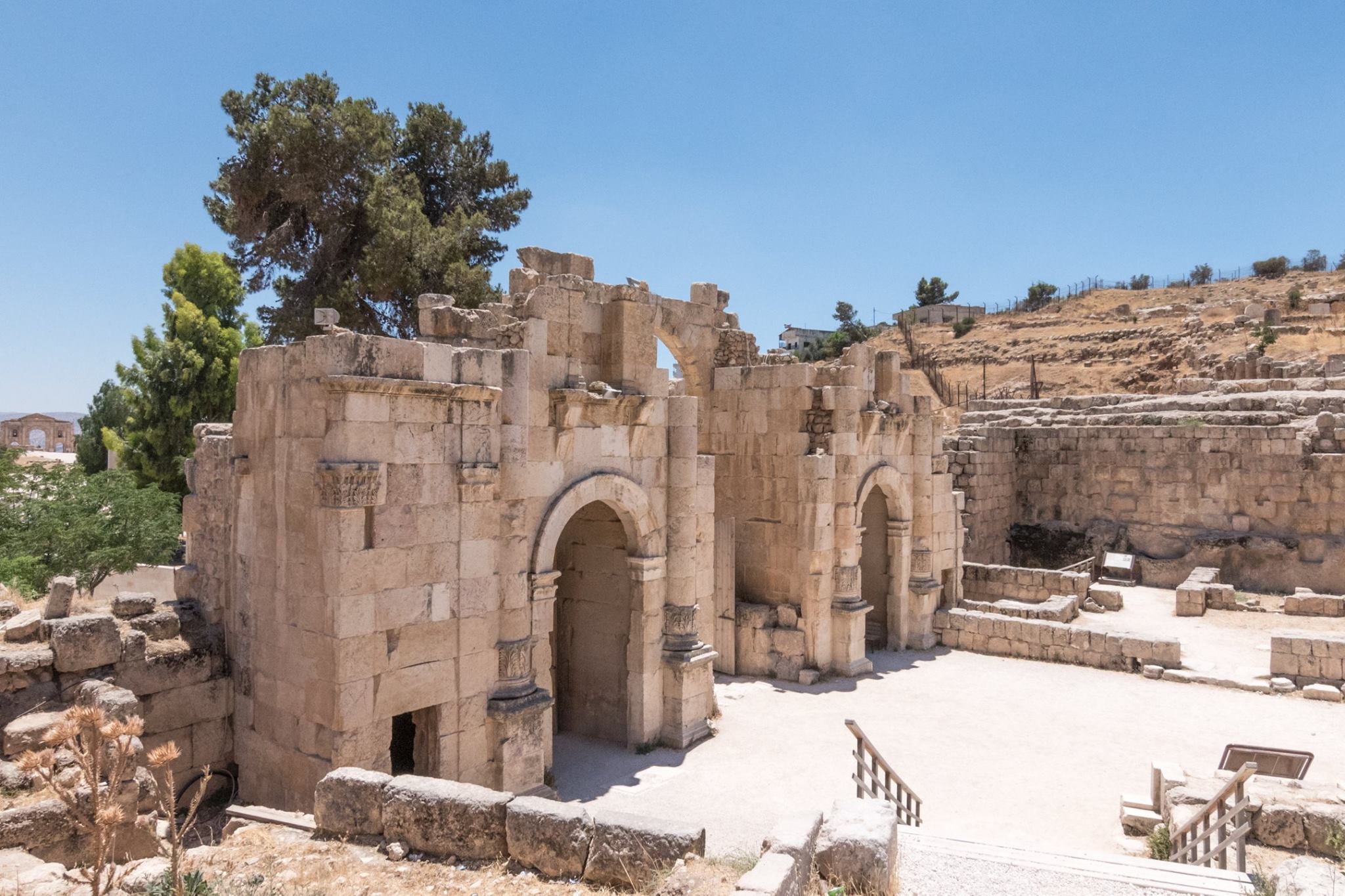
During the time of Alexander the Great (around 333 B.C), Jerash or Gerasa rose to fame. The city became part of the Roman province and then a Decapolis City. Because of the trades with the Nabataeans, Jerash city grew and became exceedingly wealthy over the next two centuries.
More prosperity found its way to Jerash around 106 A.D when Emperor Trajan occupied the Nabataean Kingdom. Old buildings were torn down to be replaced by more impressive structures. In 129 A, D construction started to increased when Emperor Hadrian visited. Hadrian's Arch was built at the southern end of the city for the visit of the famous Emperor.
At the start of the 3rd Century, the city of Jerash reached its peak when it was granted with the rank of Colony. However, it had been short-lived due to the destruction of Palmyra, the decease of the overland caravans and the progress of sea trade.
Christianity was the dominant religion before in the middle of the 5th century. Under the time of Emperor Justinian, seven churches were built, made out of stones looted from the early Roman shrines and temples.
With the attack of the Sasanian Empire from Persia in 614, the Muslim invasion in 636 and the disturbing earthquake in 747, Jerash declined. The city was totally abandoned until the arrival of the Circassians from Russia in 1878, after which Jerash archaeological significance was realized, and excavations began.

Winter Period: from 08:00-16:00
Apr and May: from 08:00-17:30
Summer Period: from 08:00-18:30
Ramadan: from 08:00-15:30
Jerash is approximately
25 km or 15 miles from Ajloun
50 km or 30 miles from Amman
100 km or 62 miles from the Dead Sea
300 km or 186 miles from Petra
360 km or 224 miles from Wadi Rum
380 km or 236 miles from Aqaba

Public buses at Tabarbour station frequently leave to Jerash when they are full.
You may hire a car, arrange a private taxi or book your day tour or holiday packages with Booking Jordan.
English
French
Arabic
Turkish
German
Dutch
Spanish
Italian
Hebrew
Russian

Wear comfortable clothes
Wear comfortable walking shoes
Bring daypack or knapsack
Camera
Caps or Hats
Shawl
Sun protection
Hadrian’s Arch – built in the south side visitors enter Jerash through this 13m tall arch built in the honor of Emperor Hadrian.
Hippodrome - built between 1st and 3rd centuries AD, this ancient sports field was once with seats with a capacity of around 15,000 audiences.
South Gate - 200 meters north of the Hippodrome is the South Gate, believed to be constructed in 130 A.D. South Gate had been one of four entrances along the city walls.
Oval Plaza - one of the most distinctive sites of Jerash, due to its shape and vast size which is 90m long and 80m at its widest point.
Temple of Zeus - was once with a splendid stairway, leading from the sacred courtyard.
Cardo Maximus – built in the 1st century, is one of the highlights of the visit to Jerash is to see this straight colonnaded street. Do not miss the chance to walk its entire length of 800m from North Gate to the Forum.
Archaeological Museum – exhibiting collections of artifacts found on the site such as jewelry, coins, glass, pottery etc.
Macellum – or agora located near the west side of Cardo Maximus is where people assembled for public meetings around the central fountain.
Umayyad Mosque - a modern mosque near the east end of South Decumanus.
South Tetrapylon – a four-pillared structure marking the crossing of the Cardo Maximus to the South Decumanus.
South Decumanus – was once the Roman town's main east-west axis.
Roman Temple of Dionysus – has been dubbed as cathedral, a 2nd century richly carved gate rebuilt in the 4th century as a Byzantine Church.
Shrine of the Virgin Mary – located against the east wall with a painted inscription of St Mary, Michael and Gabriel Archangel.
Church of Theodore – built in 496 A.D & located behind the Cathedral.
Three Byzantine Churches –
Church of St Cosmos & St Damian dedicated to the twin brothers who were martyred in 4th century.
Church of St John the Baptist from 531 A.D with damaged mosaic floor showing images of the four seasons, animals, plants and Egypt cities of Memphis and Alexandria.
Church of St George built in 530 A.D.
Nymphaeum – built in 191 A.D, this graceful main ornamental fountain is dedicated to the water nymphs and one of the highlights of Jerash.

Propylaeum or monumental gateway - is built in 150 A.D as stairways to the Temple of Artemis.
Temple of Artemis – is originally flanked by 12 elaborately carved Corinthian pillars (11 still stand at present), this temple was built between 150 and 170 A.D, dedicated to the goddess of hunting and fertility, this temple at Jerash was, and The construction is particularly impressive.
Propylaeum Church – this Byzantine Church built in the 6th century.
North Theatre - built in 165 A.D and expanded in 235 A.D, this theatre is most likely used for government meetings. It had 14 rows of seats with 2 passageways to the front of the theatre, 5 internal arched corridors to the upper rows.
Western Baths – located on east side of the Cardo Maximus lies the remains of the once impressive complex of baths – hot (calidarium), warm (tepidarium) and cold (frigidarium).
Eastern Baths – located outside the gated city on the other side of the Wadi.
Museum – located just above the forum, the Museum houses artifacts from the site, like mosaics, gold jewelry, glass, and coins found in a tomb near Hadrian’s Arch.